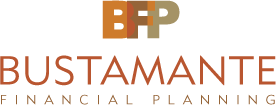Case Studies and Results
Young Family - Planning Their Future

Children: 2
Job Position:
David – Director of Engineering
Tiffany – Stay at Home Mom (a health care consultant in hiatus)
David was recently promoted earlier this year as Director of Engineering for a very large oil and gas exploration firm in Farmington, NM. His salary is $150,000 per year plus substantial bonus opportunities and equity share of the firm. Tiffany is a graduate of an East Coast liberal arts college specializing in health care issues. She has worked as a consultant and now she is a full-time mom. They are devoted to their family and live well within their means. They have accumulated a substantial balance in their checking account. As a family they enjoy camping in the mountains in Southwest Colorado.
Step 1: What is important to David and Tiffany?
| Important Concerns | Issues | Action item |
|---|---|---|
| Providing For Family | There is a concern if David prematurely dies, there would be financial difficulites. Also they do not have a will and there is no provision that names a guardian in the event they predecease their children. | Review life insurance and see an attorney to implement an estate plan. |
| Managing Debt | With interest rates very low, should they refinance? | Compare the cost of refiancing and pay off auto loan with accumulated cash. |
| Education Planning | As a couple they both value a quality education not only for their children but also to continue to advance their careers. David is considering an MBA and Tiffany an advanced certification. | Determine education cost and establish education savings |
| Retirement Planning | Need to review the contributions and the asset allocation. Contributions to the plan are nominal. | Consider Increasing Contribuitons and reallocate investments. |
| Tax Concerns | This is a recent promotion early in the year. What is the tax impact? | Provide a rough tax estimate and schedule an appointment with their tax advisor. |
Step 2: Financial Diagnostics
| Net Worth | Cash Flow | ||
|---|---|---|---|
| Total Assets | 800,000 | Income | 300,000 |
| Less Total Liabilities | (400,000) | Less Expenses | (150,000) |
| Net Worth | 400,000 | Net Cash Flow | 150,000 |
Tax Bracket: 33%
Anticipated taxes $63,250
Contributions to 401(k) plan: $150 per pay period or $3,600 per year. Contributions are primarily in an international fund.
Group Life Insurance: $150,000
Existing Mortgage Interest Rate: 6.125%, Current Rate: 2.85% (Rate as of February 2013)
Step 3: Goals Based Recommendation
- Establish a will or trust and name a guardian for the children.
- Purchase the following term life insurance policies
- David: Purchase a $500,000 10 year term life insurance and a $1,000,000 20 year term.
- Tiffany: Purchase a $250,000 10 year term life insurance and a $500,000 20 year term.
- Refinance Mortgage to lower payments and save interest and pay off auto loan
- Maximize 401(K) contribution and reallocate retirement investments
- Establish Educational 529 plans for children, reserve a fund for David’s MBA
- Provide tax clarity to prepare David and Tiffany for the higher tax situation
Step 4: Implementation and Execution of Recommendation
- Set up an appointment with attorney to prepare an estate plans, including preparing documents.
- Meet with independent life insurance agent to compare and select term life insurance policies
- Meet with mortgage lender to refinance. Auto loan was paid off.
- Meet with human resource representative to increase 401(k) contribution and reallocate retirement investments.
- Meet with accountant to determine an prepare for higher income taxes and affirm tax saving practices
- Meet with an Investment Advisor to fund 529 plans and begin an investment savings program
Results:
Funding Retirement produced a tax deferred savings of $4,644 annually. The projected retirement and investment savings is estimated to have a balance of $750,000 in 10 years and well over $1,500,000 in 20 years. Based on that number it was determined that effective use of term life insurance will provide the protection gap until those balances are reached. The staggered term resulted in a total of $2,250,000 of insurance at a minimal cost of $750 annually. The mortgage refinance provided monthly savings of $283. Overall the saving and investment programs more than offset the cost of annual life insurance policies and the one-time expense of preparing an estate plan.
DISCLAIMER
The information provided here is intended to be educational and should not be considered or construed as legal, accounting (tax), or financial planning advice. The strategies described may not be suitable for all individuals. Examples are provided for illustrative purposes only, and no representation is made that a person acting on these examples will achieve the results shown.
Although every effort has been made to assure the integrity of this material (including the reliability of websites referred to in the text), no representation or warranty is given as to accuracy or completeness. We encourage you to consult with legal and accounting professionals (as appropriate) before applying any of the strategies discussed to your particular circumstances.
Single Professional - Managing Debt

Children: None
Job Position: Health Care
Kathy, age 44, is a radiologist in Taos who purchased a home in 2006 prior to the mortgage crises. Her home was in need of repairs and obtained a second mortgage and third mortgage, one was for a new roof and the other was to upgrade the electrical. In addition she had to borrow from her retirement plan in order to make other renovations. She also has credit card debt, student loans and a car loan. The burden of debt is overwhelming especially since she estimates that she purchased her home at the top of the market and the home value is less than the total outstanding mortgage debt. Her salary is $67,000 per year and that does not include the rent she receives from her roommate. Kathy is a hard worker and has worked extra hours to cover her debt. She does some travel to visit her family in another state. She also has been involved in business ventures. She is savvy and knows that she needs to deal with her financial issues. She does maintain a 403(b) fund and contributes to receive the maximum matching employer contribution. Her cash flow is restricted because of the amount of debt she carries.
Step 1: What is important to Kathy?
| Important Concerns | Issues | Action item |
|---|---|---|
| Managing Loans, Leases and Debt | Wishes to review the outstanding debt and to establish a payment schedule to reduce debt | Meet with mortgage lender to review alternatives and to pay off credit card debt. |
| How to Save for Retirement | Wants to project retirement savings and implement changes to provide a better retirement outcome. | Increase the amount needed to satisfactorily retire at age 65. |
| Will and Estate Plan | Wants to establish a will and health care documents | This will be deferred until she can afford an attorney. |
| Prepare for Life Changing Events | To prepare for premature death and disabliltiy. | No changes, she has this protection in place |
| Other Matters | To consider other matters as they come up. | No action taken. |
Step 2: Financial Diagnostics
| Net Worth | Cash Flow | ||
|---|---|---|---|
| Total Assets | 347,376 | Income | 79,536 |
| Less Total Liabilities | (335,000) | Less Expenses | (77,931) |
| Net Worth | 12,376 | Net Cash Flow | 1,605 |
Tax Bracket: 25%
Anticipated taxes: $6,770
Contributions to 401(k) plan: $100 per pay period or $3,600 per year. Retirement contributions are allocated to a well defined structured investment program.
Group Life Insurance: $65.000 and a universal life policy $13,000
Existing Mortgage Interest Rate: 6.0%, Current Rate: 4.5% (Home Affordable Refinance Program)
Step 3: Goals Based Recommendation
- Refinance first mortgage and pay off credit card debt. Upon payment of credit card debt,apply those payments to principal on second mortgage.
- Increase the retirement contributions from 200/mo to $500/mo as follows:
- Half of the $205 savings on the mortgage payment should be applied to the retirement plan.
- Upon the 403(b) loan payoff in two years, apply the 200 per monthly payments as retirement contributions.
- Make an appointment with an attorney to establish an estate plan.
Step 4: Implementation and Execution
- Set up an appointment with mortgage lender to refinance first mortgage. Increased principal payments to pay off credit card debt. Further principal reductions on other loans will continue as each debt is paid off.
- Increased initial contributions to retirement plan.
- Opted to defer an appointment with an attorney. Kathy will use the health care power forms provided by her employer.
- Will continue to set aside money for emergency saving.
Results:
Refinancing the mortgage provided $2,400 saving to Kathy’s mortgage payments, the term length did not change. Kathy will have no debt by the time she retires. Concurrently, Kathy will add to her retirement plan. It is projected that upon retirement she will have accumulated $469,000 by the time she retires based on an assumed 5% annual return. The first two years the cash flow will be tight, however, as debt is paid off, there should be ample surplus in her cash flow to provide more leisure spending.
DISCLAIMER
The information provided here is intended to be educational and should not be considered or construed as legal, accounting (tax), or financial planning advice. The strategies described may not be suitable for all individuals. Examples are provided for illustrative purposes only, and no representation is made that a person acting on these examples will achieve the results shown.
Although every effort has been made to assure the integrity of this material (including the reliability of websites referred to in the text), no representation or warranty is given as to accuracy or completeness. We encourage you to consult with legal and accounting professionals (as appropriate) before applying any of the strategies discussed to your particular circumstances.
Married Couple - Planning for Retirement

Children: One daughter, married, independent and succeeding in her career
Job Position:
Albert – Painting Contractor
Cynthia – College Professor
Albert , age 73 and Anne, age 67 live in Las Cruces. Albert is a painting contractor and Cynthia teaches part-time at NM State University. Because of their transitional life from one college to another they have rented rather than purchased a home. Home ownership did not occur until the past five years. They were dedicated to providing for their daughter’s education. Now they are approaching retirement and drawing on Social Security even though both are still employed. Albert sees that, although he enjoys his profession, he finds that he is less physically able to continue painting. Cynthia would like to retire in two years and both would love to pursue art studies and literature. Their primary concern is a stronger retirement and to pay off debt. They live a modest lifestyle. Albert prepares the household tax returns.
Step 1: What is important to Albert and Cynthia?
| Important Concerns | Issues | Action item |
|---|---|---|
| Retirement Funding and Living at Retirement | They want to review their retirement funding and retirement asset allocation strategy. They also want retirement projections when they officially retire. | Run retirement projections and recommend changes to provide a better retirement outcome. |
| Will and Estate Plan | Would like to update their will and put their estate plan in place. Each have had past health concerns that must be considered. | Meet with an attorney to draft estate planning documents including healh care documents. |
| Support Children | Albert wants to communicate with their daughter and son-in-law the will and health care plans. | Provide a copy of their financial plan. |
| Tax Concerns | Since they are both receiving income as well as Social Security, that positions them in a higher tax bracket. | Maximize contributions to retirement plans |
| Continuing Education | Cynthia loves the stimulation of the acdemic environment and wishes to continure to attend workshop and seminars | This will be an addition to the budget |
| Other Matters | Wants to travel to France to meet with Albert's relatives. Together they want to install an arbor in the garden. | Moneys are already in place to provide for this goal |
| Charity and Philanthrophy | They want to see how much they can afford to give to charitable causes that are important to them. | Review cash flow and determine amount available for charity |
Step 2: Financial Diagnostics
| Net Worth | Cash Flow | ||
|---|---|---|---|
| Total Assets | 555,000 | Income | 105,000 |
| Less Total Liabilities | (93,000) | Less Expenses | (79,000) |
| Net Worth | 462,000 | Net Cash Flow | 26,000 |
Tax Bracket: 15% Federal and 4.9% New Mexico
Itemize: They cannot itemize deductions
Other tax issues: They are receiving Social Security Benefits and 85% of the benefits are taxable. Anticipated taxes: $8,044
Contributions to 403(b) plan: $200 per pay period or $3,600 per year. Retirement contributions are allocated to 50% cash and 50% equities. Tax savings comparison was calculated.
| Bi-weekly Payroll Contribution | Current | Maximum | ||||
| 403(b) Contribution | 200.00 | 300.00 | 400.00 | 500.00 | 600.00 | 846.14 |
| Federal Tax Savings 15% | (30.00) | (45.00) | (60.00) | (75.00) | (90.00) | (126.92) |
| New Mexico Tax Savings 4.9% | (9.80) | (14.70) | (19.60) | (24.50) | (29.40) | (41.46) |
| Net After-tax Impact on Take Home Pay | 160.20 | 240.30 | 320.40 | 400.50 | 480.60 | 677.76 |
Met with an owner of a national tax preparation firm and ran tax scenarios on their tax software. This determined the impact of maximizing 403(b) contributions. In addition the tax preparer provided tax advice on Albert’s business.
Step 3: Goals Based Recommendation
- It was determined that Cynthia should maximize her contribution from $200 per pay period to 846 per pay period. In addition their retirement asset allocation was reviewed and recommended alignment to a strategy appropriate for their stage in life. Retirement projections were prepared and determined that Cynthia and Albert could retire in two years based on their current living standards and if she maximize her retirement contributions.
- That they prepare for the meeting with an attorney.
- That they have their financial plan available for their daughter in the event she needs to assist.
- That they utilize a tax preparation professional.
- Their budget and goals for education, travel, hobby and charity are doable.
Step 4: Implementation and Execution of Recommendations
- Cynthia increased her retirement contribution from $200 to $846 per pay period. She also further diversified her cash position to several diversified bond strategies. Her equities were reallocated to represent large-cap, mid-cap, small-cap, international developed and emerging market funds. In addition a real estate trust and a commodity index fund were represented in the retirement portfolio.
- An appointment was made with a local attorney to draft their estate plan.
- Two sets of plans were provided; one for Albert and Cynthia and the other for their daughter.
- Albert will consider the tax preparer’s advice and engage their services the following tax year.
- The projects, travel, charity and seminars are budgeted.
Results:
Maximizing the 403(b) contribution will enable Cynthia and Albert to save $4,380 in taxes. In addition, the 403(b) contributions will add $44,000 of principal to their retirement balance over the next two years. The advice of the tax preparer will also save them an additional $1,000 in taxes. Their attorney completed the estate plan. Also they are preparing for their trip to France and they have completed the garden arbor. Finally, they know that their budget will allow for charity and seminars.
DISCLAIMER
The information provided here is intended to be educational and should not be considered or construed as legal, accounting (tax), or financial planning advice. The strategies described may not be suitable for all individuals. Examples are provided for illustrative purposes only, and no representation is made that a person acting on these examples will achieve the results shown.
Although every effort has been made to assure the integrity of this material (including the reliability of websites referred to in the text), no representation or warranty is given as to accuracy or completeness. We encourage you to consult with legal and accounting professionals (as appropriate) before applying any of the strategies discussed to your particular circumstances.
Married Couple - Managing Proceeds from a Sale

Children: Two sons, one attending a private East Coast College and the other a West Coast University
Job Position:
Michael – Scientist
Anne – Music Instructor
Michael , age 61 and Anne, age 58 live in Albuquerque. Michael works at a major laboratory and Anne teaches music part-time at a local high school. Anne’s family large owns a large concrete company in San Diego of which she owned a partial interest. Her siblings purchased her share which amounted to around $7,000,000 and she has kept part of the money in cash. Since the housing market in California has severely declined, Anne wants to make set aside ample reserves to help her family’s business weather through the difficult time. One of the concerns is that monies have been spread to various banks in Albuquerque and much of it is uninsured. In addition there is not a structure to provide for bond investments. Michael and Anne are self-sufficient from their employment salary and do not rely on either the income or principal of the family business proceeds. Preservation of the business proceeds is important; however they appreciate the need for equity investments to provide diversification and to stay ahead of inflation. They hold no debt and are able to cover the educational expenses of their sons.
Step 1: What is important to Michael and Anne?
| Important Concerns | Issues | Action item |
|---|---|---|
| Prepare for Emergency Savings | Wants to determine an amount of cash to assist the family business if they need to continue to during this difficult economic environment. | Work with family running the business to determine how much reserves might be needed. |
| Investment Preservation | Concerned that a significant amount of their cash is uninsured. They would like to conservatively invest to provide income with some appreciation | Need to coordinate the maturities of bank deposits, bonds and equity to provide structure. |
| Will and Estate Plan | As a result of the sales proceeds a new estate plan must be implemented. | Meet with an attorney specializing in estate plans. |
| Retirement Plan | Maximize retirement plan contributions to reduce taxes, rebalance investments | Meet with human resource representative. |
| Tax Concerns | Invest in tax efficient bonds and stocks. Michael and Anne wish to work with existing banks and investment advisors. | Meet with investment advisors to coordinate invesments. |
Step 2: Financial Diagnostics
| Net Worth | Cash Flow | ||
|---|---|---|---|
| Total Assets | 7,800,000 | Income | 175,000 |
| Less Total Liabilities | - | Less Expenses | (125,000) |
| Net Worth | 7,800,000 | Net Cash Flow | 50,000 |
Tax Bracket: 33% Anticipated taxes: $40,000
Contributions to 401(k) plan: $100 per pay period or $3,600 per year. Retirement contributions are allocated to a conservative fixed income program.
Step 3: Goals Based Recommendation
- It was determined that $2,000,000 should be set aside to either lend or invest in the family concrete business.
- Invest the remaining proceeds in an asset allocation strategy
- Make an appointment with an attorney to establish an estate plan.
- Increase the contribution to their company retirement plan.
Step 4: Implementation and Execution of Recommendations
- Of the $2,000,000 set aside as an emergency reserve for the family business, Michael and Anne felt it would be best to establish a mini bond ladder that did not extend beyond a three year term.
- Michael and Anne met with their investment advisors to implement a coordinated asset allocation strategy. Therefore they divided up the assets to provided a combined 50% bond/50% equity split. This consisted of municipals, cds, on a bond ladder that does not exceed 12 years. The equities were managed among large-cap, mid-cap, small-cap, international developed and emerging markets. Other positions included real estate trusts and a commodity index.
- They met with an attorney specializing in estate planning. This attorney established irrevocable life insurance trust to provide for estate taxes.
- Michael met with the human resources to increase his contribution to his retirement plan.
Results:
Restructuring the investment program increased their investment income from $50,000 to $200,000. Much of the income was from tax free municipal bonds and reduced taxes on qualified dividends. They did realize an increase in their tax bracket, but that was manageable. The estate plan is now in place and they are prepared for the various tax changes that could come about.
DISCLAIMER
The information provided here is intended to be educational and should not be considered or construed as legal, accounting (tax), or financial planning advice. The strategies described may not be suitable for all individuals. Examples are provided for illustrative purposes only, and no representation is made that a person acting on these examples will achieve the results shown.
Although every effort has been made to assure the integrity of this material (including the reliability of websites referred to in the text), no representation or warranty is given as to accuracy or completeness. We encourage you to consult with legal and accounting professionals (as appropriate) before applying any of the strategies discussed to your particular circumstances.
Single Individual - Pursuing an MBA

Children: None
Job Position:Research Analyst
Miguel, age 28, is a research analyst for an American company that has an office in Madrid, Spain. He is single and no dependents. Miguel desires to obtain his MBA at a top-tier business school. His educational endeavor will be a major expense. Although Miguel is an American citizen, he pays both US and Spanish taxes and participates in the Spanish health care and retirement programs. Miguel monitors his income and spending. He also sets aside savings for investments as well as contributes to his retirement plans.
Step 1: What is important to Miguel?
| Important Concerns | Issues | Action item |
|---|---|---|
| Budgeting and Emergency Savings | This is to obtain a handle on where the money is going and to ascertain the amount of saving contribution to accomplish other savings goals. | Completed and a four year future projection was created. |
| Protection Against Risk | Miguel want to protect against investment risk. This card normally relates to life and property insurance. However, Miguel felt this should apply more to his investments. | It was recommended to move all investments as possible to a conservative 2 year time horizon, since he will be using those resourses to fund his education. |
| Investment Accumulation and Preservation | Miguel has $10,000 to add to his existing $25,000 investment. He wishes to review the asset allocation and ways to best preserve this investment. This includes retirement investments. | Rather than investing these funds it is recommended to retain in a savings account to fund his education. |
| How to Pay for Business School | This is to review the costs to meet education expenses. Also explored will be ways to cover costs including financial aid. | This was completed. |
| Starting a Business or Career Change | Along with the business school, Miguel would like to leverage his higher level with education with a career change or advancement. | This was deferred. |
| Will and Estate Planning | This will simply review the existing title of the accounts and to provide information for his beneficiary (Miguel' Mother). | This was deferred. Miguel should still consider will substitutes and health care powers. |
Step 2: Financial Diagnostics
| Net Worth | Cash Flow | ||
|---|---|---|---|
| Total Assets | 106,500 | Income | 81,624 |
| Less Total Liabilities | - | Less Expenses | (41,820) |
| Net Worth | 106,500 | Net Cash Flow | 39,804 |
Bracket: 29.7% (Foreign Tax Bracket) Anticipated taxes: $13,283
Contributions to retirement plan: $308 per pay period or $7,380 per year. Retirement contributions are allocated to a well defined structured investment program.
Step 3: Goals Based Recommendation
- Review Business Schools – It was noted studies comparing income between attending a top-tiered MBA program and a lower MBA program over 20 years. In addition the costs were reviewed below:
School 2012-2013 Tuition Fees Health Boarding Other Total Harvard University 56,175 958 3,148 13,752 20,777 94,810 MIT (Sloan) 58,200 2,046 5,250 18,757 4,696 88,949 Columbia University 60,720 4,205 3,186 20,700 4,590 93,401 University of Pennsylvania - Wharton 59,736 5,092 3,430 22,496 6,327 97,081 Stanford University 59,550 4,751 4,491 24,087 987 93,866 University of California - Berkeley* 26,158 828 1,153 20,000 48,139 Dartmouth College (Tuck) 58,935 5,630 13,260 12,375 90,200 New York University (Stern) 56,554 1,960 24,472 1,140 84,126 - Educational Funding Sources – Miguel will need to draw from the following to finance his MBA
- Miguel has saving in the amount of $46,000
- Miguel has retirement savings with a provision that he can draw without penalty provided it is used to fund education
- Miguel will still need to rely on student loan ranging from 6.8% to 7.9% interest rates. However the above savings will reduce the reliance on such loans.
- Funding Source and Outlay – A plan was made to determine on when and how to draw on the mentioned resources to reduce the tax impact and the amount of loans necessary to finance his MBA.
- Loan Balance and Monthly Payment – A projection was made to determine what his student loan payment obligations will be after he obtains his MBA
Step 4: Implementation and Execution of Recommendations
- Miguel worked with his accountant to run a mock tax preparation to make sure there were no tax surprises in both foreign and US taxes. This plan was submitted as part of his application to one of the above MBA programs on how he intends to finance his education.
Results:
Miguel was accepted to the MBA of his choice and will be beginning the program in the Fall of 2014.
DISCLAIMER
The information provided here is intended to be educational and should not be considered or construed as legal, accounting (tax), or financial planning advice. The strategies described may not be suitable for all individuals. Examples are provided for illustrative purposes only, and no representation is made that a person acting on these examples will achieve the results shown.
Although every effort has been made to assure the integrity of this material (including the reliability of websites referred to in the text), no representation or warranty is given as to accuracy or completeness. We encourage you to consult with legal and accounting professionals (as appropriate) before applying any of the strategies discussed to your particular circumstances.
